Kenya Animals — Animals That Live in Kenya
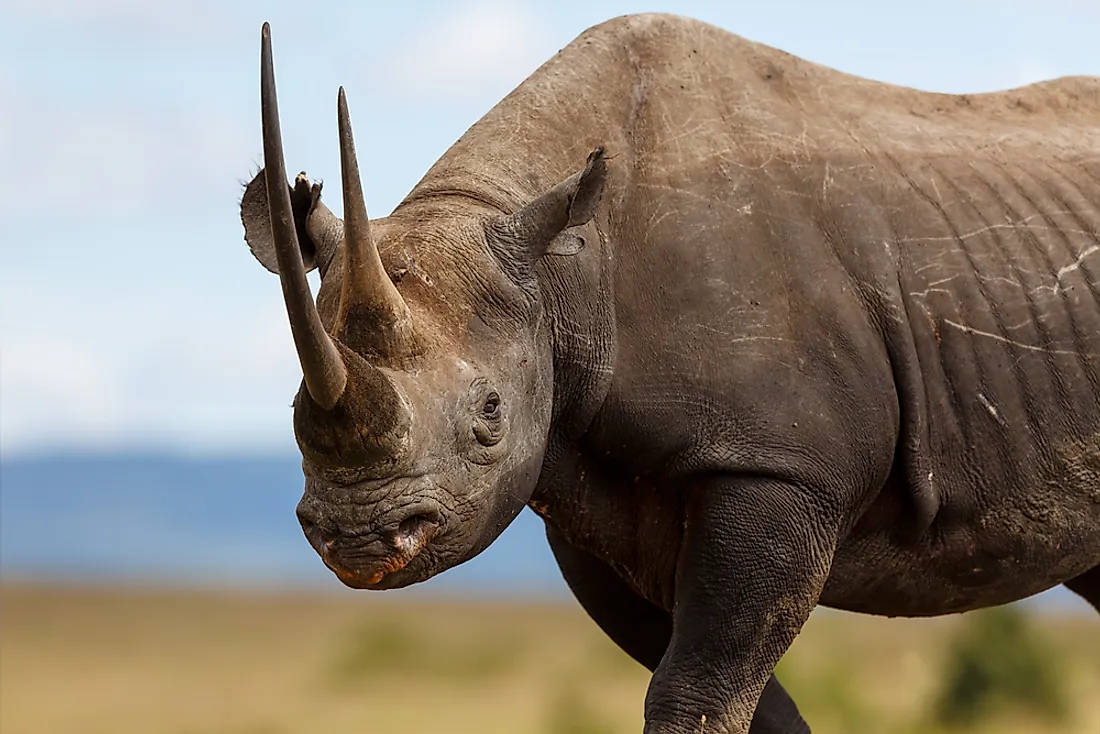
Kenya lies in Eastern Africa with a coastline on the Indian Ocean. Its landscape comprises of savannah grasslands, mountainous highlands, the Great Rift Valley, and lake basins. The county has gained international fame for its diverse wildlife that comprises of large populations of the world’s largest mammals. Most of the wildlife is found in its national parks and game reserves.
10. African buffalo
The African buffalo (Cape buffalo) is one of the Big Five game animals in Kenya. The savanna subspecies is endemic to the mopane grasslands of Mount Kenya and Aberdare National Parks as well as the floodplains of the Maasai Mara. The Cape buffalo is identified by its gray-brown coat with the older bulls bearing white circles around their eyes and face. A distinct characteristic of these bulls is their enormous curved horns that almost meet over the forehead. The massive animal is usually hunted for trophy and game meat. It is also nicknamed as “Black Death’’ due to its aggressive nature. Nursing females and solitary males are reported to attack over 200 people annually.
9. Crocodile
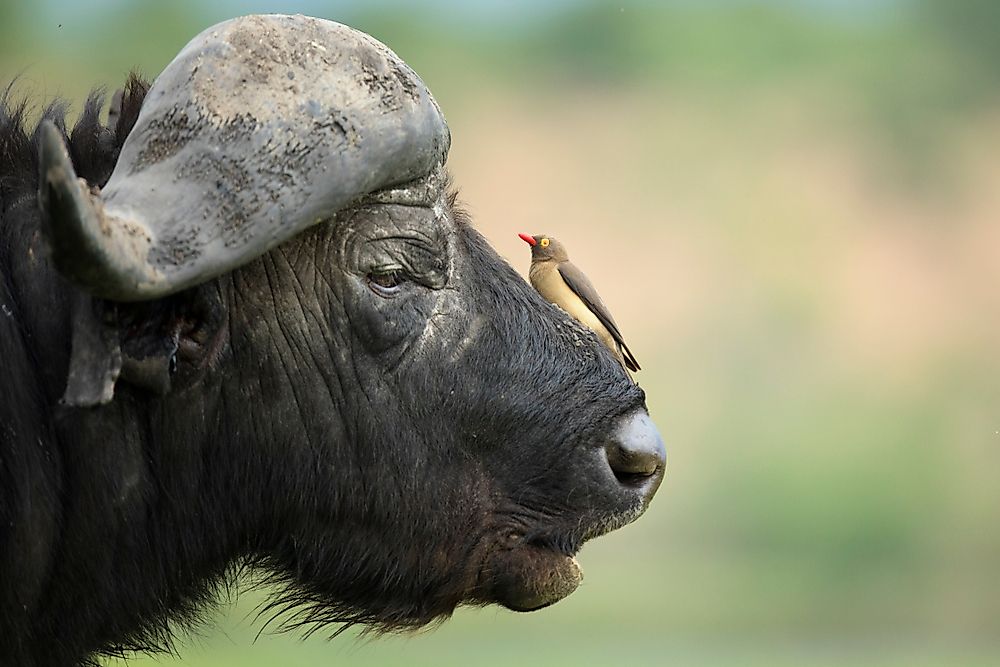
The African Nile crocodile predominant in Kenya is the largest freshwater predator in Africa. It is also one of the largest reptiles in the world growing up to 16 feet in length and weighing 1,650 pounds. The best place to catch a glimpse of this agile predator is at the Mara and Telek rivers during the wildebeest migration as they pounce on the animals crossing the rivers. They are also reared at the Mamba Village Resort in Nairobi and Mombasa. Nile crocodiles are opportunistic apex predators taking on any animal within their range. They are social animals known to share basking spots and large sources of food including carcasses. The aggressive vicious reptile has been reported to be a major source of human-wildlife conflict in Kenya responsible for hundreds of human deaths annually.
8. Giraffe
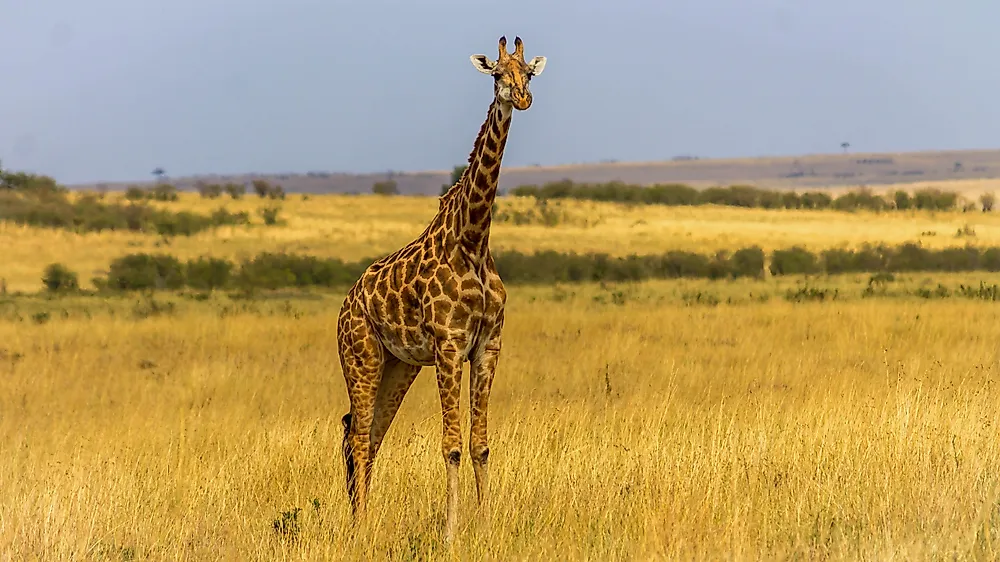
The giraffe is the tallest living terrestrial animal iconic to Kenyan wildlife. It is identified by its extremely long neck and legs, distinctive coat pattern, and a horn-like ossicone. There are three subspecies of the giraffe found in Kenya namely: reticulated giraffe only found in Samburu National Park, Rothschild's giraffe endemic to Lake Nakuru National Park and Giraffe Centre, and the Maasai giraffe found in Tsavo, Amboseli, and Mara Game Reserves. Giraffes are browsers feeding mainly on the twigs of the Acacia tree. Occasionally, they have been spotted licking dried meat off the bones of carcasses. Giraffes are social animals that live in herds comprising of related females with their offspring, or unrelated adult males.
7. Genet
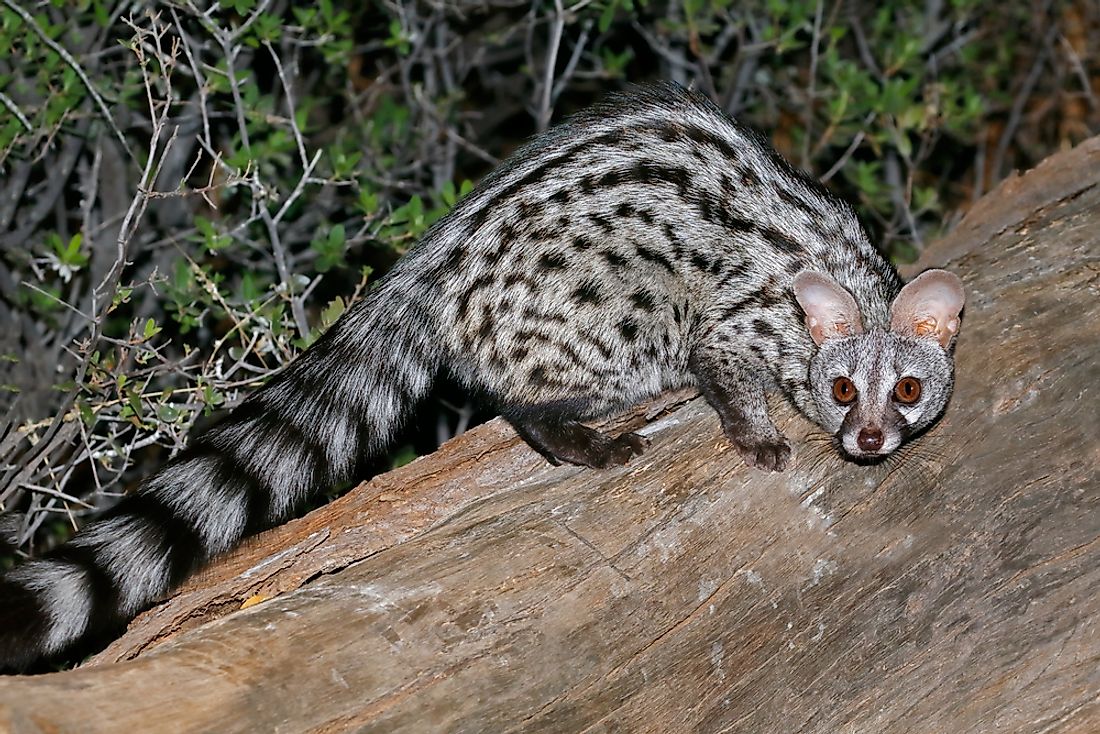
Genets are cat-like animals with long bodies, bushy ringed tails, retractile claws, large ears, and a pointed muzzle. The genet lives in the savannah woodlands of Maasai Mara, Amboseli, Tsavo, Samburu, and Mount Kenya National Parks in Kenya. It is mainly nocturnal hence seldom sighted. It spends its days sleeping in abandoned burrows, hollow trees, rock crevices, or up on high branches. The genet is a solitary forager that hunts at night, after which it returns to the same hideout each day. Its diet consists of small animals such as rodents, birds, fruits, reptiles, and insects. The animal is solitary, although families are found to share a territory demarcated using a substance secreted through the musk gland.
6. Lesser kudu
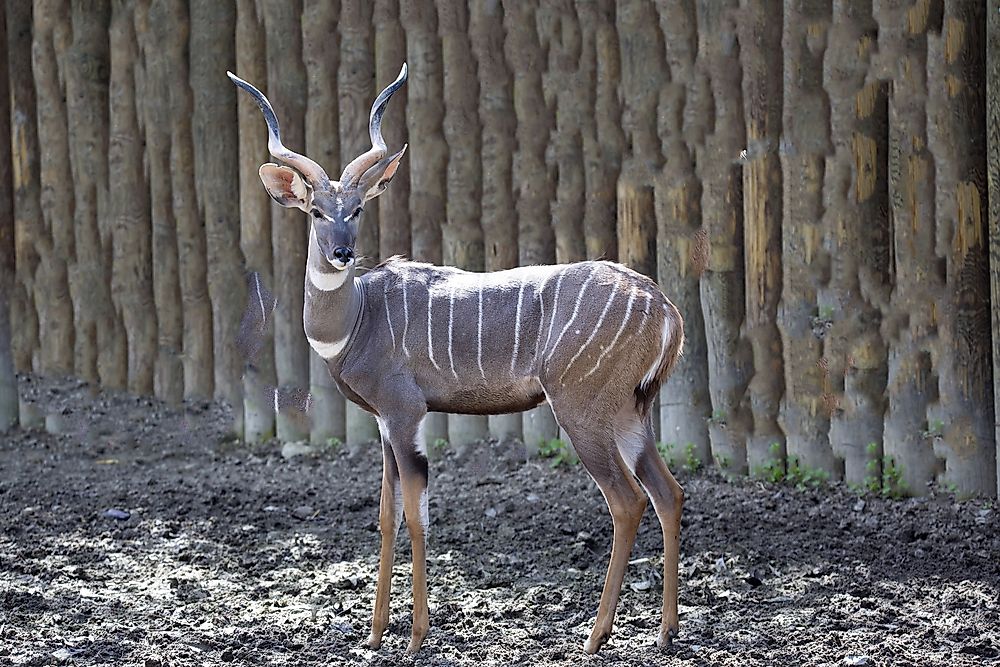
The Lesser Kudu (Tragelaphus imberbis) is a forest antelope that inhabits the arid scrublands of Marsabit and Tsavo national parks in Kenya. It is distinguished from its close relative, the greater Kudu, by the lack of a beard, the presence of more pronounced vertical white stripes branching towards the sides, and two white patches underneath the neck. Lesser Kudus are browsers and predominantly feed on young shoots, twigs, and leaves. Kudus are shy creatures that spend much of their time hiding in the dense thicket and only come out to feed at dusk or dawn. Male kudus are timid and mainly solitary while the females are gregarious living in herds with their fawns.
5. Wildebeest
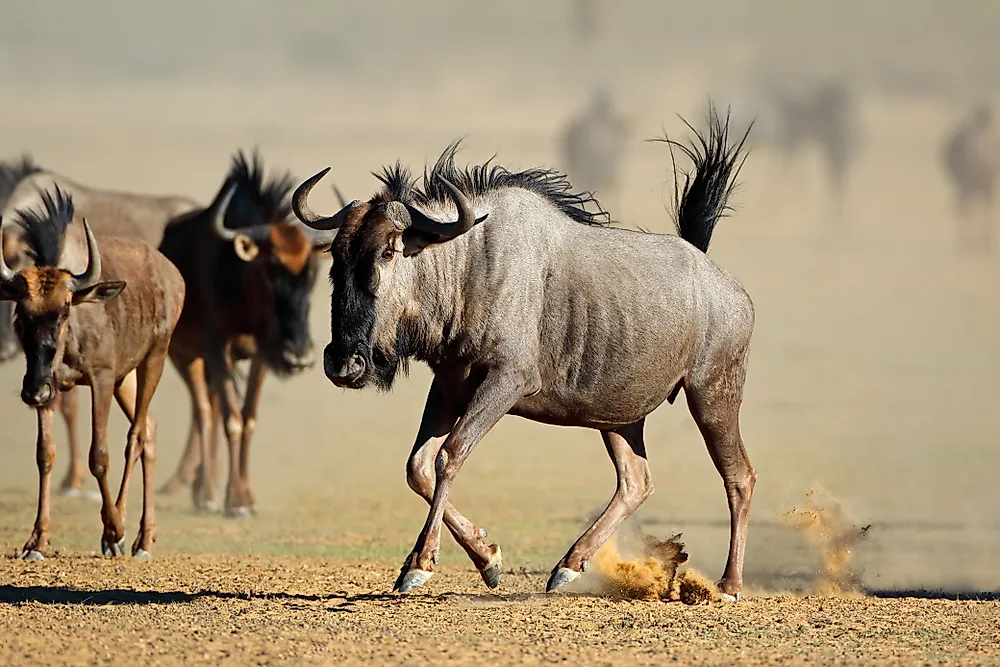
The wildebeest, commonly known as gnu, is a member of the Bovidae family together with other even-toed horned ungulates. It is distinguished by its large, box-like head with curving horns. The blue wildebeest is found in Kenya where it inhabits the short grass savannah plains of Maasai Mara National Reserve. It is the most abundant big game species and groups with zebras as a strategy for minimizing predation. Being merely nomadic, the blue wildebeest performs the spectacular annual migration through the Mara River between July and October. The migration pattern is usually in response to rainfall variations in the Mara and Serengeti Game Reserves.
4. Elephant
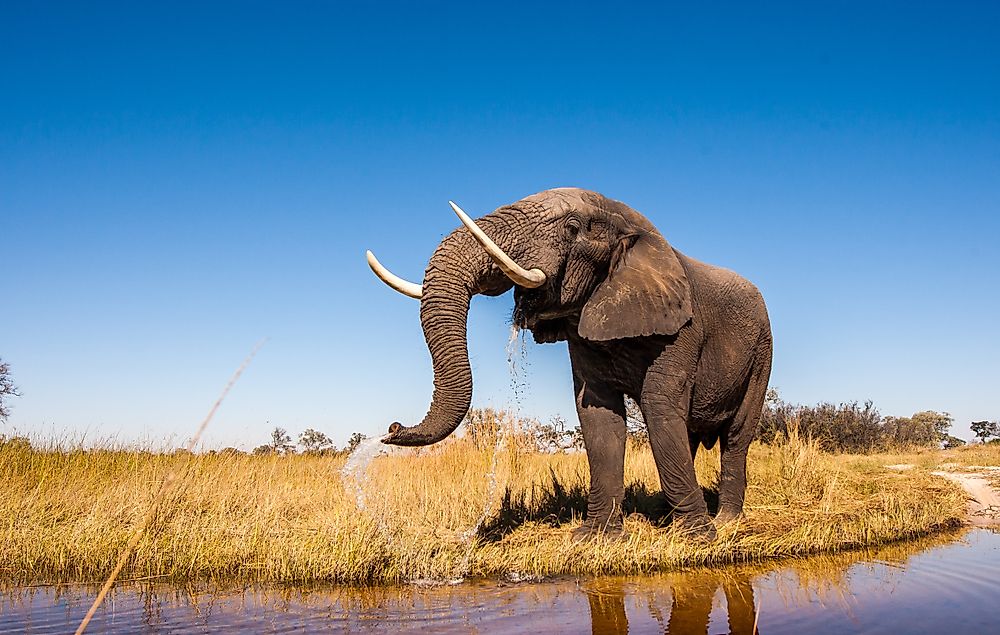
The African bush elephant is the largest living African mammal endemic to the savannahs and forests of Kenya. Elephants have distinctive features including a long tusk usually used for breathing and grasping objects. The second incisors of the upper jaw are modified to form two tusks that grow at about 7 inches in a year. Female elephants live in families where a family may comprise of one female and her offspring or several related females and their calves. Bulls leave the family upon reaching puberty and may live alone or join other male groups. IUCN has listed the African elephants as nearly threatened due to constant poaching its tusks for ivory. Elephants are found in abundance in Amboseli, Maasai Mara, Mount Kenya, and Aberdare National Parks.
3. Lion
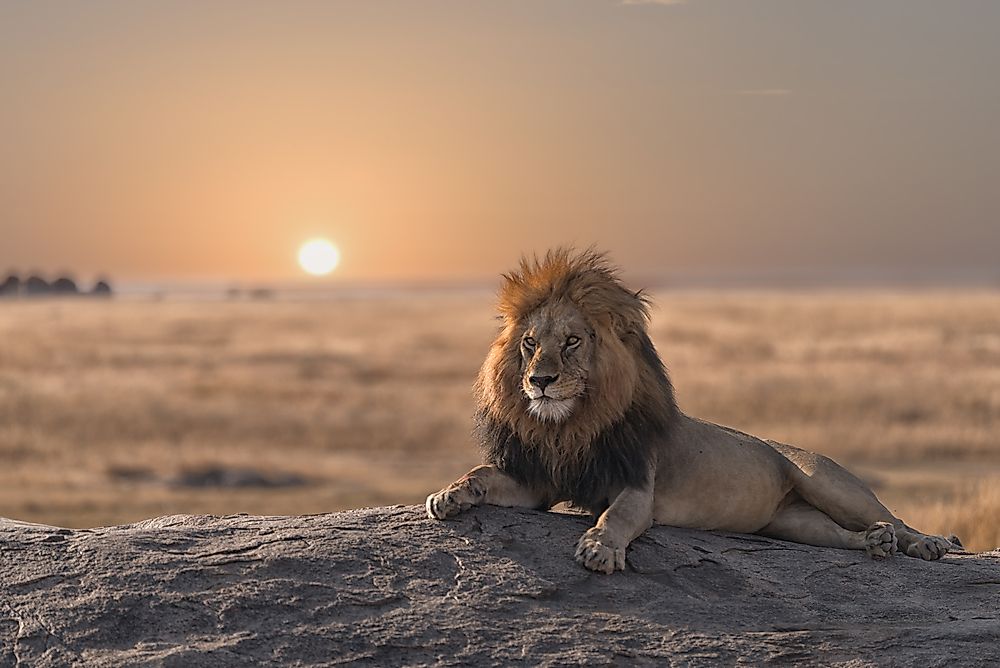
The African lion is a subspecies of the Panthera leo melanochaita population predominant in East Africa. It is the largest African cat inhabiting the savanna grasslands of Samburu, Maasai Mara, Tsavo, Meru, and Nairobi National Parks. Male lions are distinguished by a brown mane around the neck that gets darker with age. Female lions do not have a mane. Unlike other big cats that are solitary, African lions are social and live in prides of up to 20 members. Within the pride, lionesses do most of the hunting, where they approach their prey stealthily. Their hind legs are adapted for pouncing while the forelegs are grabbing and bringing down prey. Their main diet comprises of wildebeests, buffaloes, zebras, and antelopes.
2. Hyena
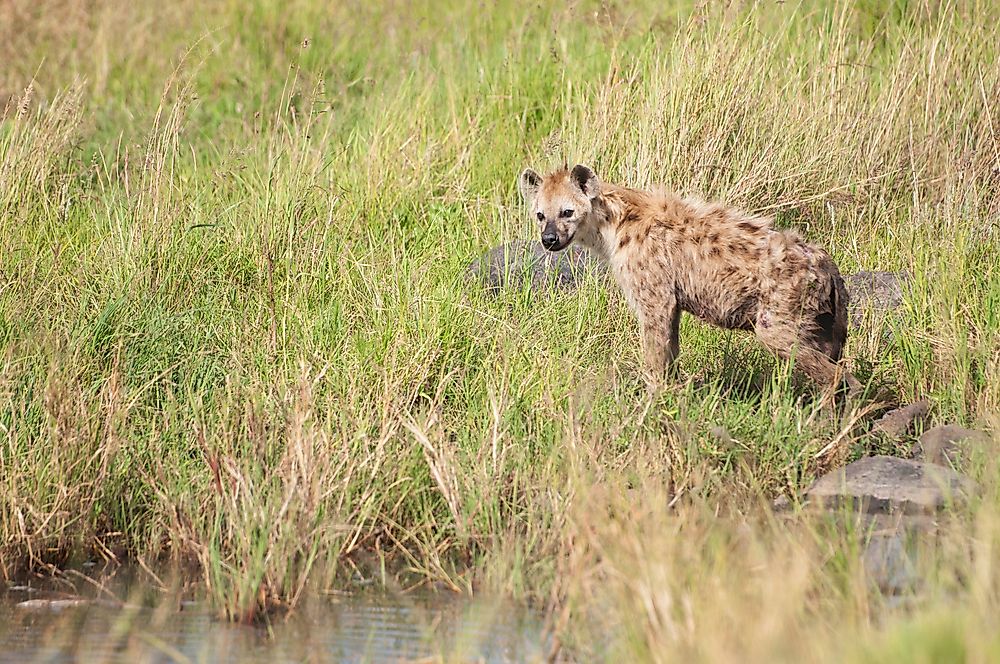
Hyenas are feliform carnivoran animals inhabiting the woodland, savannah, grassland, and mountainous regions. The striped and spotted hyenas are the most common species found in Kenya. Spotted hyenas are predators and usually kill most of their prey while stripped hyenas are largely scavengers. Hyenas are mainly nocturnal but are frequently sighted during the day near lion and cheetah kills as they wait to scavenge. They are usually spotted sleeping in abandoned aardvark holes or in large burrows where they can dig up to one meter below the surface.
1. Rhinoceros
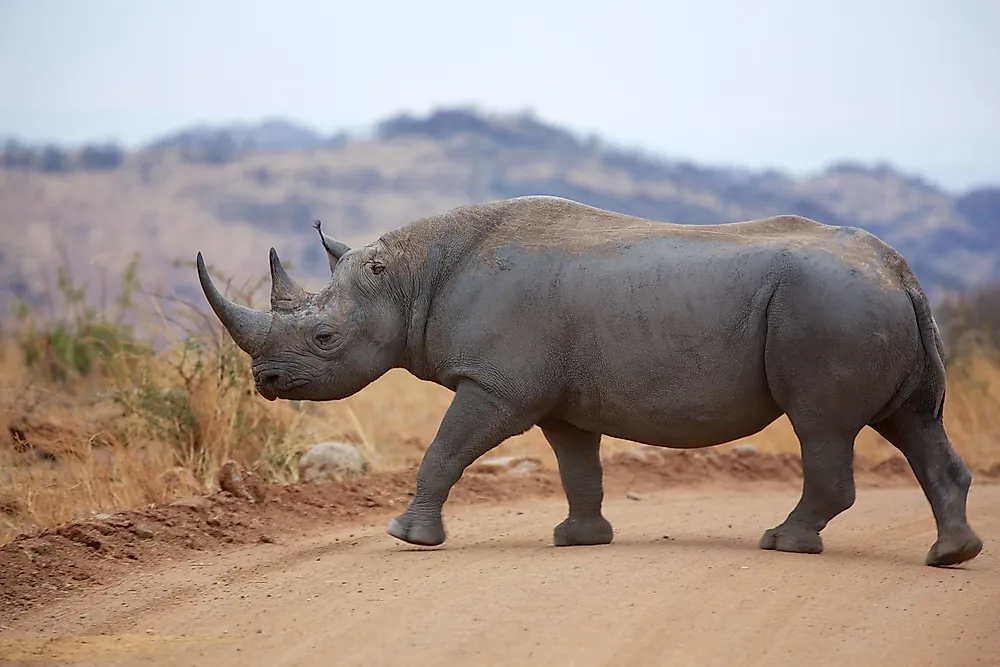
The African black rhino is one of the Big Five game animals inhabiting the grasslands and open savannah in Kenya. Rhinos are characterized by the presence of one or two horns made of keratin and a fibrous protein on the upper part of their snout. White rhinos have a wide mouth adapted for grazing while black rhinos have a pointed upper lip adapted for browsing. The northern white Rhino, which was found in the country, was the only remaining male in the world but died in captivity at Ol Pajeta Conservancy. Rhinos have been classified under IUCN Red List as critically endangered species due to frequent poaching for ivory trade in Asia.











